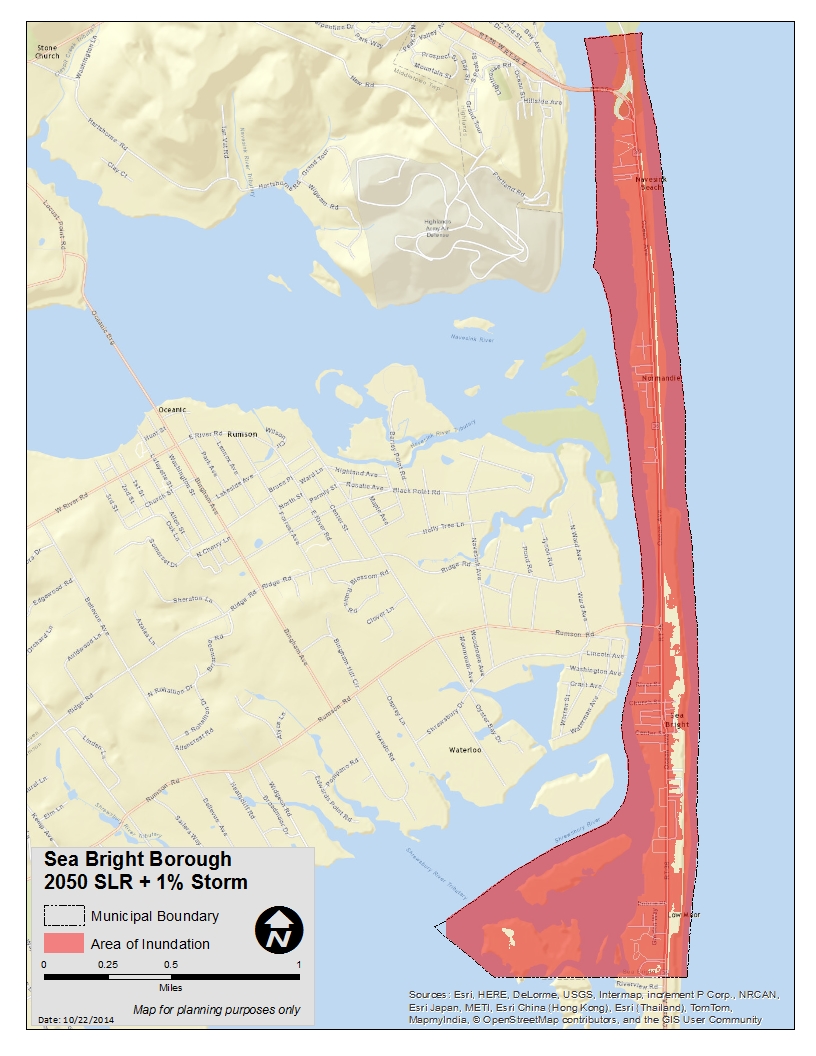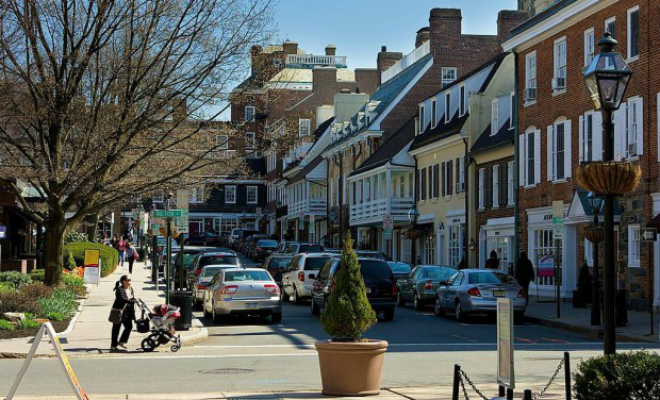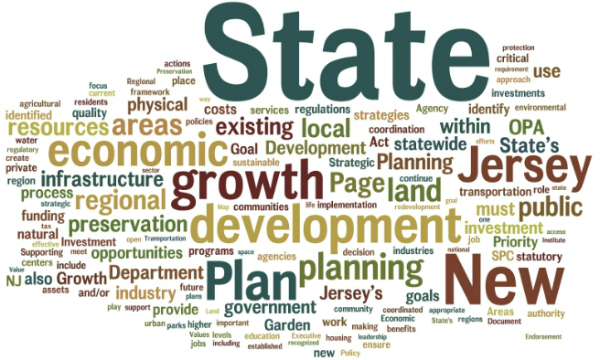New Jersey Future Blog
Redevelopment Forum Keynote: ‘Walkable Urbanism’ Is Key to New Jersey’s Future
March 22nd, 2012 by New Jersey Future staff
 Since the 1950s, the United States has had a “de facto social engineering policy” of promoting “drivable suburban” development, keynote speaker Chris Leinberger told his New Jersey Future Redevelopment Forum audience on March 9. The federal government provided massive subsidies for infrastructure that drove development far beyond urban centers, and banks and real-estate interests fueled this trend by favoring investment in suburban properties.
Since the 1950s, the United States has had a “de facto social engineering policy” of promoting “drivable suburban” development, keynote speaker Chris Leinberger told his New Jersey Future Redevelopment Forum audience on March 9. The federal government provided massive subsidies for infrastructure that drove development far beyond urban centers, and banks and real-estate interests fueled this trend by favoring investment in suburban properties.
- Americans are now paying a high price for this kind of development, according to Leinberger. “Drivable suburban” households spend 25 percent of their income on transportation, while “walkable urban” households spend only 9 percent of their income on transportation.
- The issue facing New Jersey, he told the audience, is how to swing the pendulum back from this drivable suburban state toward a walkable urban future.
More is Less for ‘Drivable Suburban’ Development
Many in the luncheon crowd at New Jersey Future’s seventh-annual Redevelopment Forum were still digesting their cold cuts and salads when keynote speaker Leinberger stepped to the microphone and delivered an opening shot to their state’s midsection:
“New Jersey is the poster child for sprawl.”
A renowned urbanist, president of LOCUS; Responsible Real Estate Developers and Investors and visiting fellow at the Brookings Institution, Leinberger did not mince words when he described how New Jersey, like the rest of America, latched onto a drivable suburban lifestyle in the 1950s—and didn’t let go for the next half-century.
“Transportation drives development,” he noted. Modifying a well-known quote from Winston Churchill (“First we shape our buildings, thereafter they shape us”), he said, “We first build our transportation system, and then it molds our metro regions.”
Investment in highways leads to drivable suburban development, he explained, while investment in rail, bus, bike lanes and sidewalks leads to walkable urban development.
Higher transportation costs are not the only price Americans have paid for this increased suburbanization, Leinberger observed. As the drivable suburbs have experienced more and more development, the quality of life has declined—more traffic congestion, more crowded malls, longer lines at the supermarket and shrinking open space. As each new development gobbled up open space and increased the pressure for services, existing residents organized to try to prevent growth.
On the other hand, as more and more gets redeveloped in a walkable urban environment, the quality of life improves: The neighborhood becomes more vibrant, the streets become livelier and, perhaps most important, the value of existing assets goes up. As each new development is advanced, it can be embraced and supported by existing residents because of the net benefits of growth.
The Market Will Demand a Walkable Urban Future
How can New Jersey swing the pendulum back from being a predominantly drivable suburban state toward a more walkable urban future? A large part of the answer, Leinberger said, is to let the market lead the way.
As the “industrial economy” gives way to the “knowledge/experience economy,” he noted, the demand is shifting from drivable suburban to walkable urban living. This demand is being driven, he explained, by two demographic groups: Millennials – those born between the early 1980s and the early 2000s – and Baby Boomers.
Millennials, who grew up in the drivable suburbs, are showing a strong preference for walkable urban communities, he said. And Baby Boomers, who have become “empty-nesters” (and, starting this year, are becoming retirees), no longer need the luxury, or the expense, of a large suburban split-level and a household fleet of cars.
In the 1950s, he noted, there was a 50-50 split between the percentage of American households with and without children. Today, that split is 25-75. And over the next 20 years, only 14 percent of new households will have children, while 86 percent will be childless. These statistics, he said, are driving the demand for walkable urban living.
Leinberger offered five visual examples of places that have been transformed from drivable suburban to walkable urban environments: White Flint, Bethesda and Silver Spring, Md., Dadeland, Fla., and Belmar-Lakewood, Colo. And he concluded his presentation with a “New Jersey To Do List” that would help bring about a similar transformation in the Garden State:
- Identify the probable regionally significant and local-serving walkable urban places in the state; 90 percent of them will be transit-oriented development;
- Overlay zoning for these places; make it easy to do the right thing;
- Consider local sales tax increase for funding additional streetcar lines and more light rail like the Bergen/Hudson Light Rail Line;
- Encourage Business Improvement Districts for the strategy and management of these places, plus strategies for affordable housing and getting over the paranoia about school funding;
- Enlist citizen support: turn “NIMBY” into “YIMBY” – Yes In My Back Yard;
- Encourage the state’s congressional delegation to push for more transit, biking and walking in the federal transportation bill; and
- New Jersey Future should be more aggressive in fighting for the future.
The enthusiasm with which the audience greeted Leinberger’s presentation—and the encouragement New Jersey Future staff received from attendees and participants throughout the day—offered a strong dose of positive reinforcement for the final item on this list.

















While unfortunately I didn’t have a chance to attend this session Mr. Leinberger’s comparison of “walkable urban” areas versus sprawl areas as well as the generational interest to these urban areas rings true. Most of our urban areas in New Jersey were generally built around rail stations and continue to be walkable as designed over 100 years ago. As Planners the one item we all continue to struggle with, to improve our transportation infrastructure, remains funding.